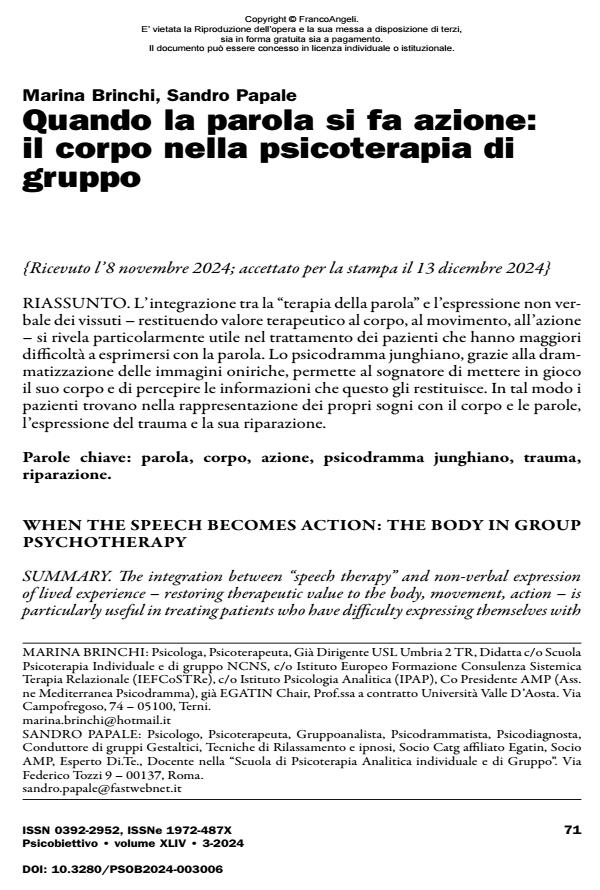When the speech becomes action: the body in group psychotherapy
Journal title PSICOBIETTIVO
Author/s Marina Brinchi, Sandro Papale
Publishing Year 2025 Issue 2024/3
Language Italian Pages 13 P. 71-83 File size 151 KB
DOI 10.3280/PSOB2024-003006
DOI is like a bar code for intellectual property: to have more infomation
click here
Below, you can see the article first page
If you want to buy this article in PDF format, you can do it, following the instructions to buy download credits

FrancoAngeli is member of Publishers International Linking Association, Inc (PILA), a not-for-profit association which run the CrossRef service enabling links to and from online scholarly content.
The integration between “speech therapy” and non-verbal expression of lived experience – restoring therapeutic value to the body, movement, action – is particularly useful in treating patients who have difficulty expressing themselves with words. Jungian psychodrama, thanks to the dramatization of dream images, allows the dreamer to put his body in play and to perceive the information that it returns to him. In this way, patients find the representation of their dreams, body and words, the expression of trauma and its repair.
Keywords: Word, Body, Action, Jungian psychodrama, Trauma, Reparation.
Marina Brinchi, Sandro Papale, Quando la parola si fa azione: il corpo nella psicoterapia di gruppo in "PSICOBIETTIVO" 3/2024, pp 71-83, DOI: 10.3280/PSOB2024-003006